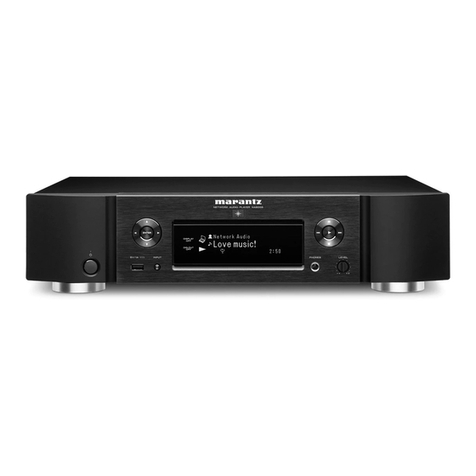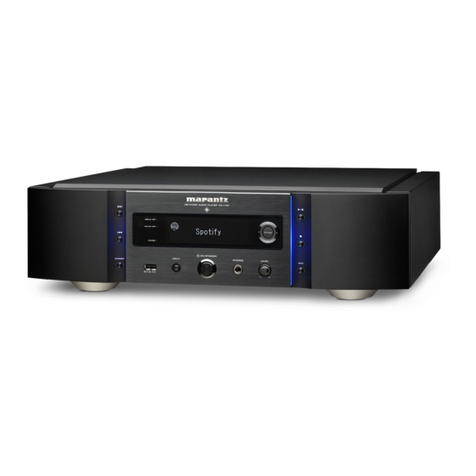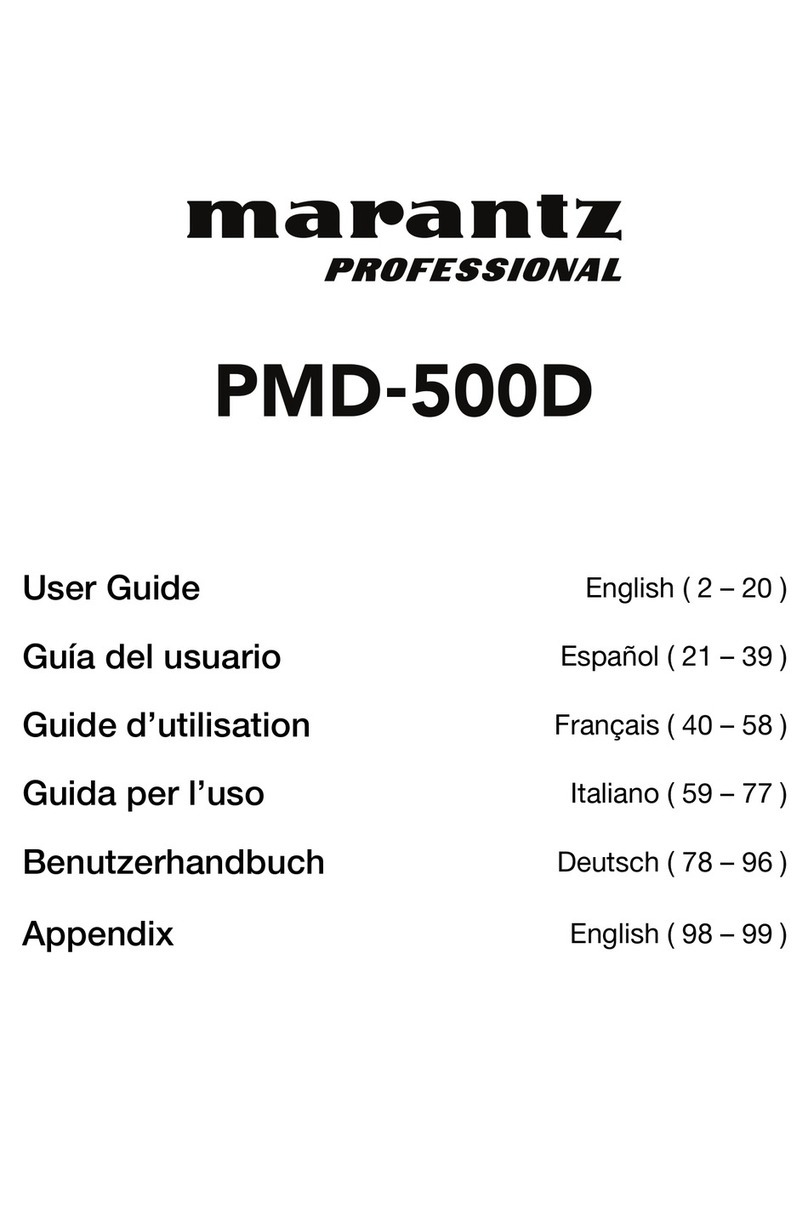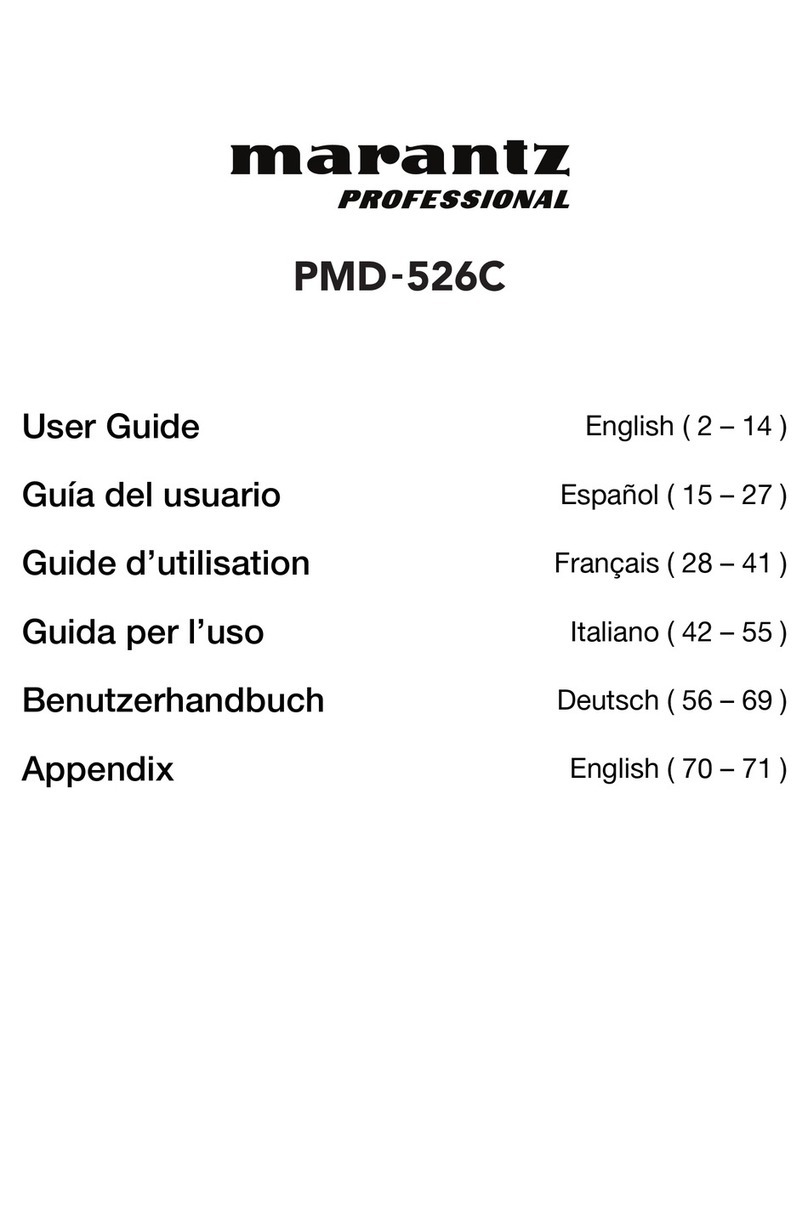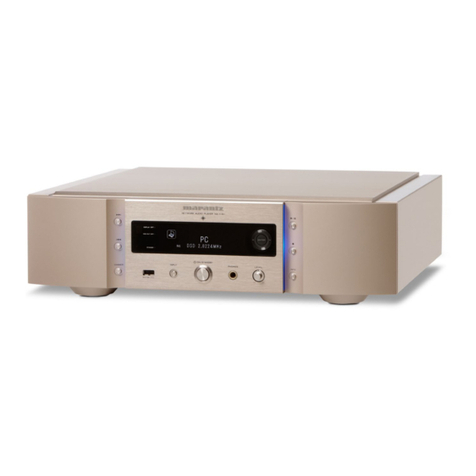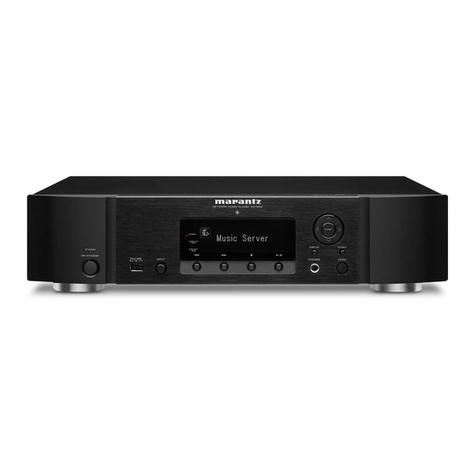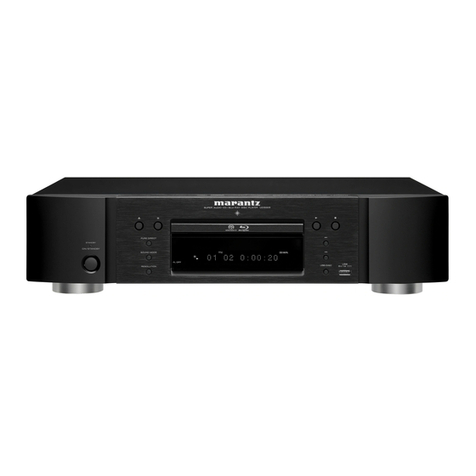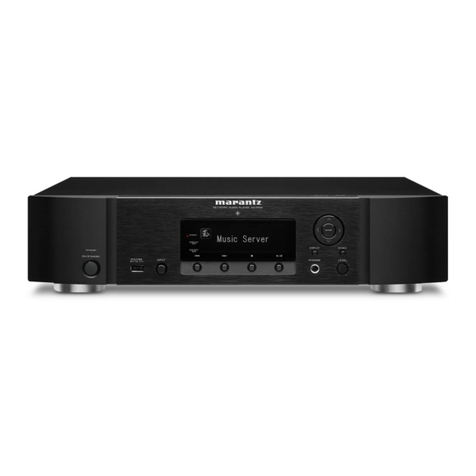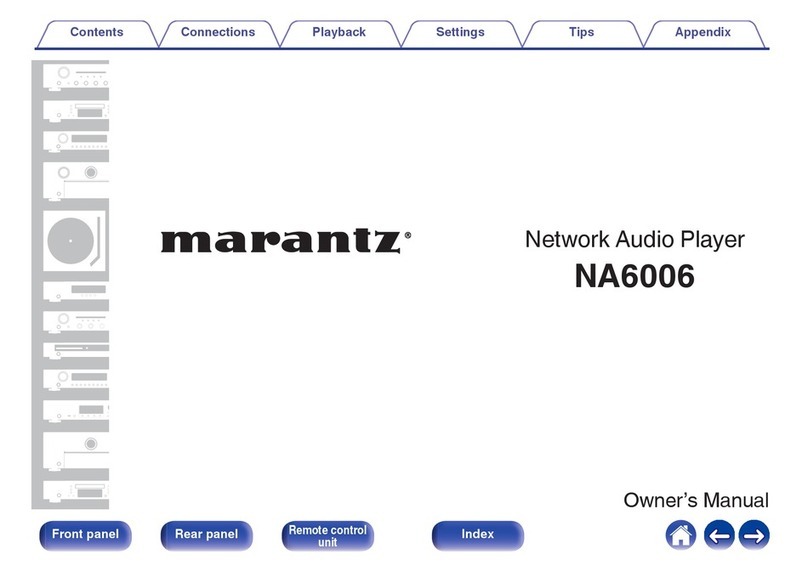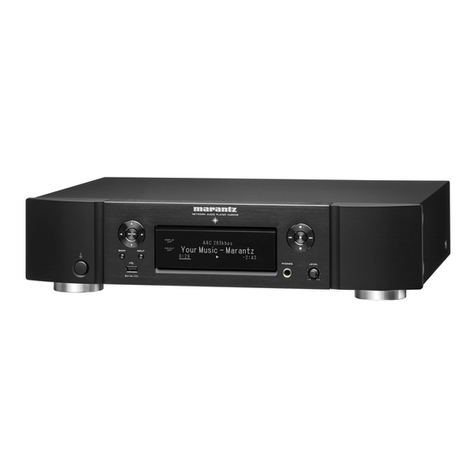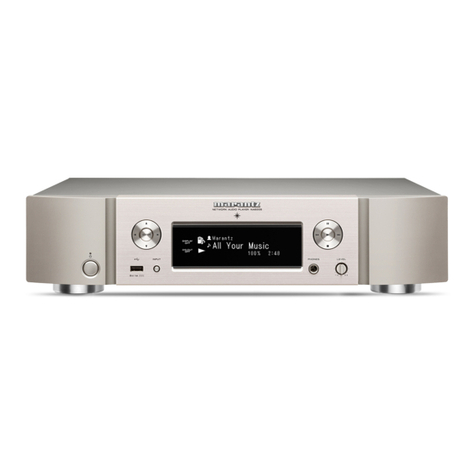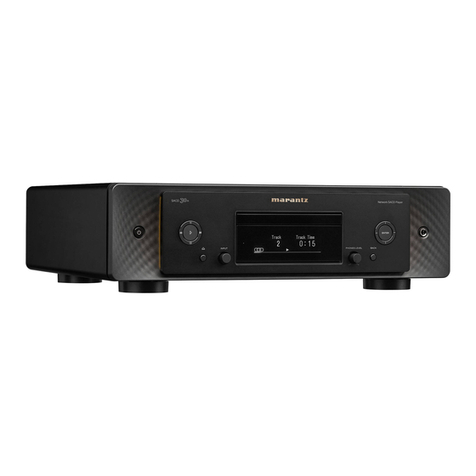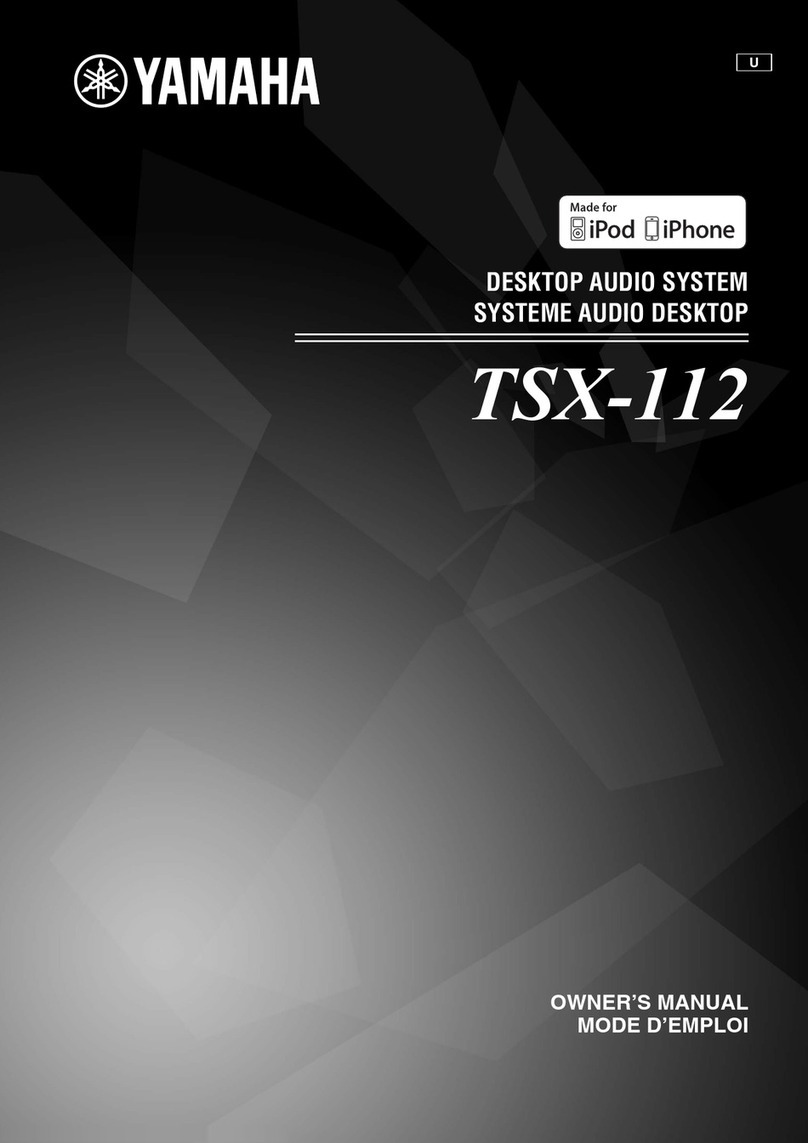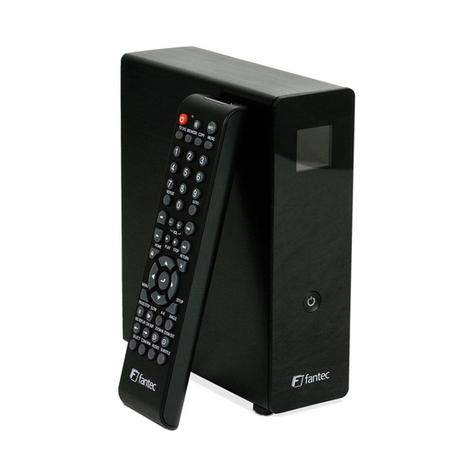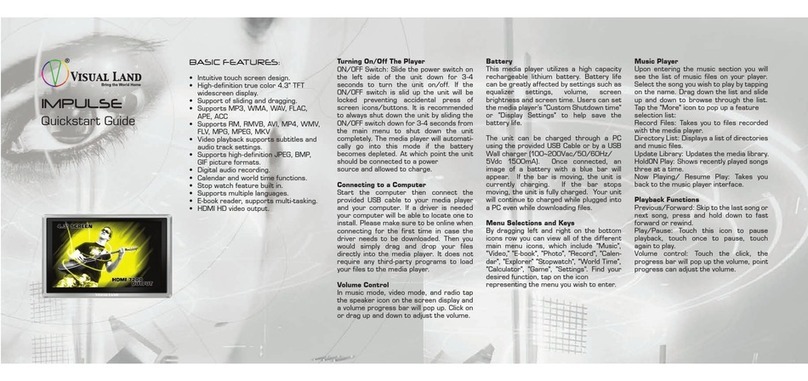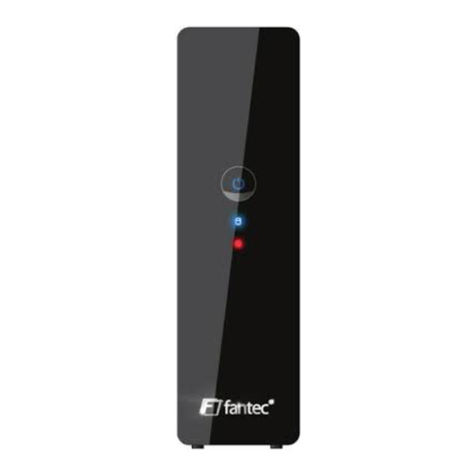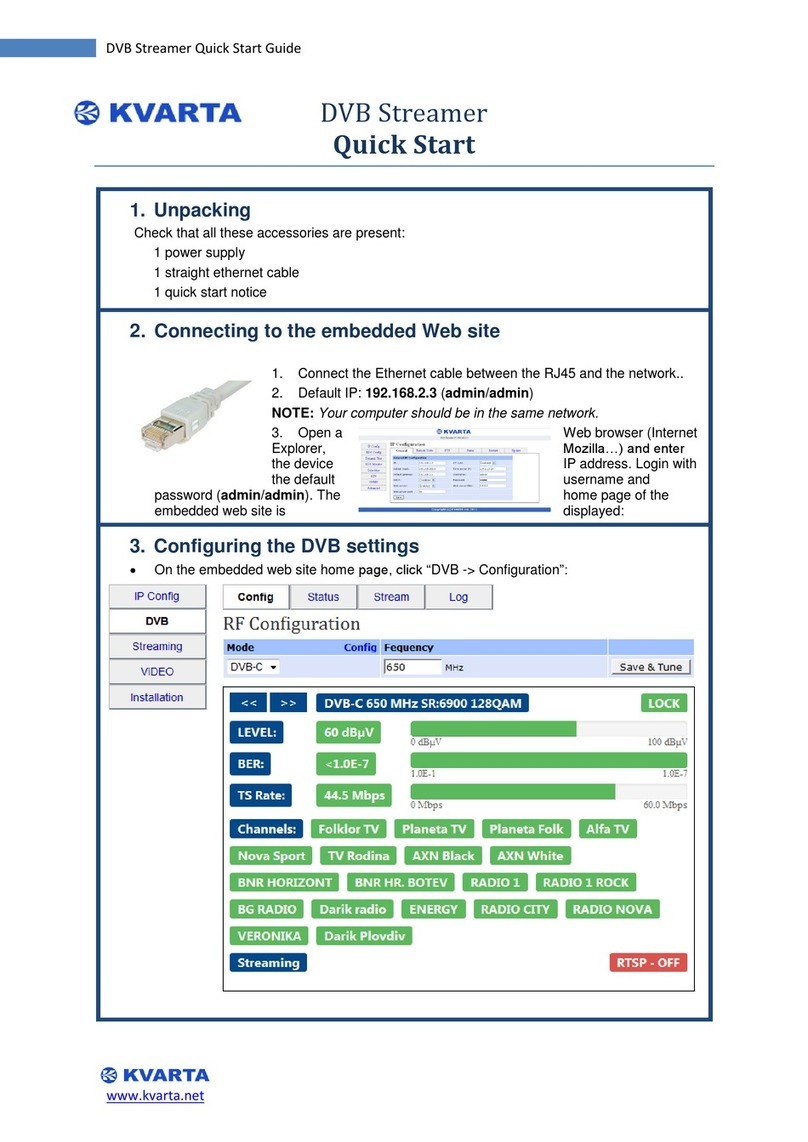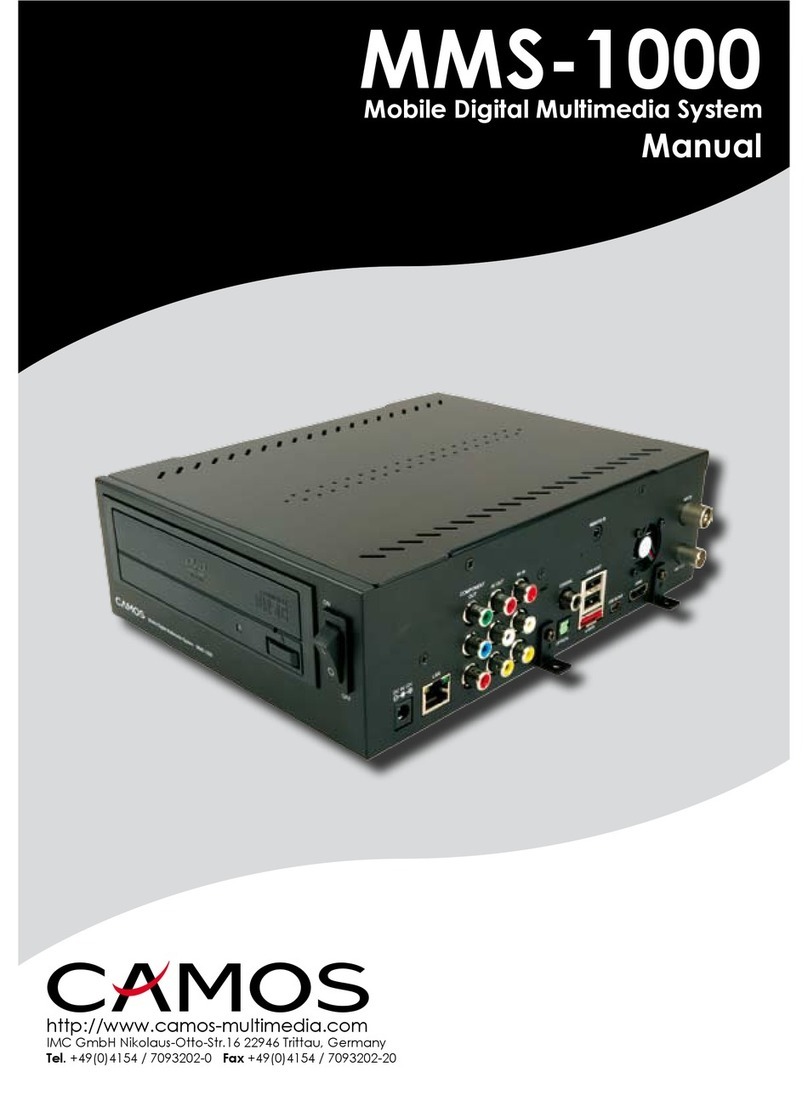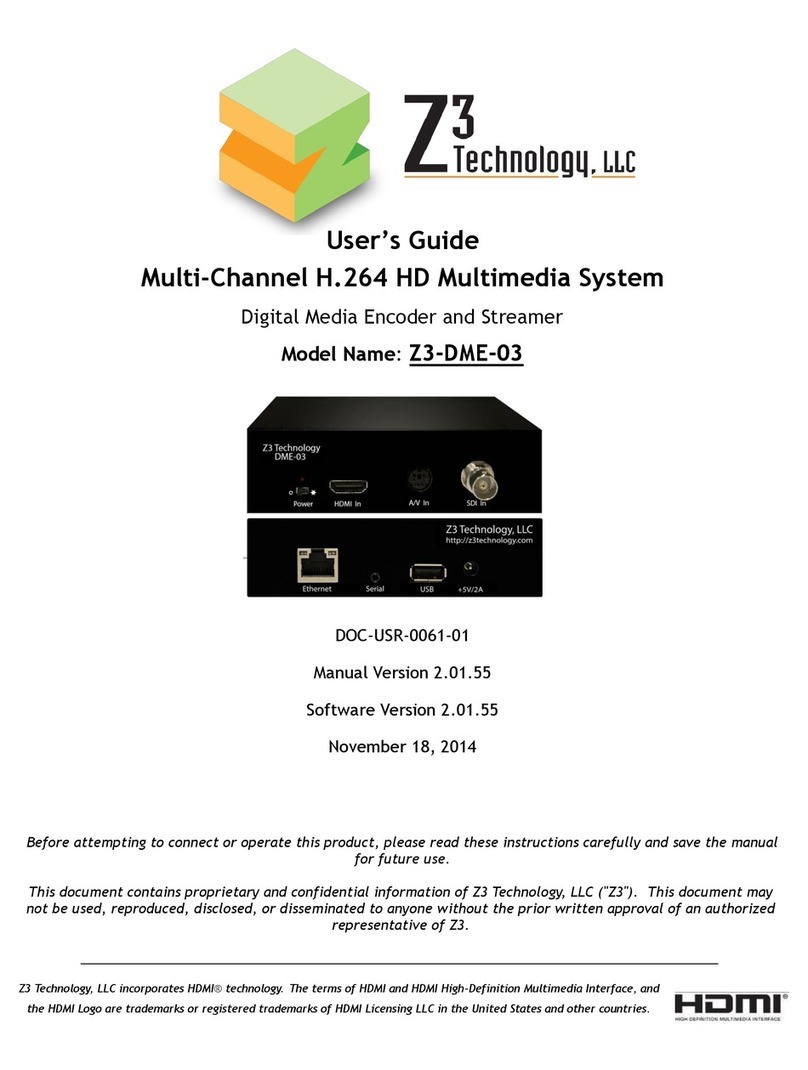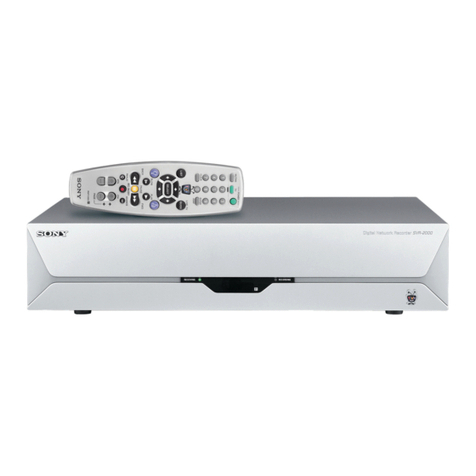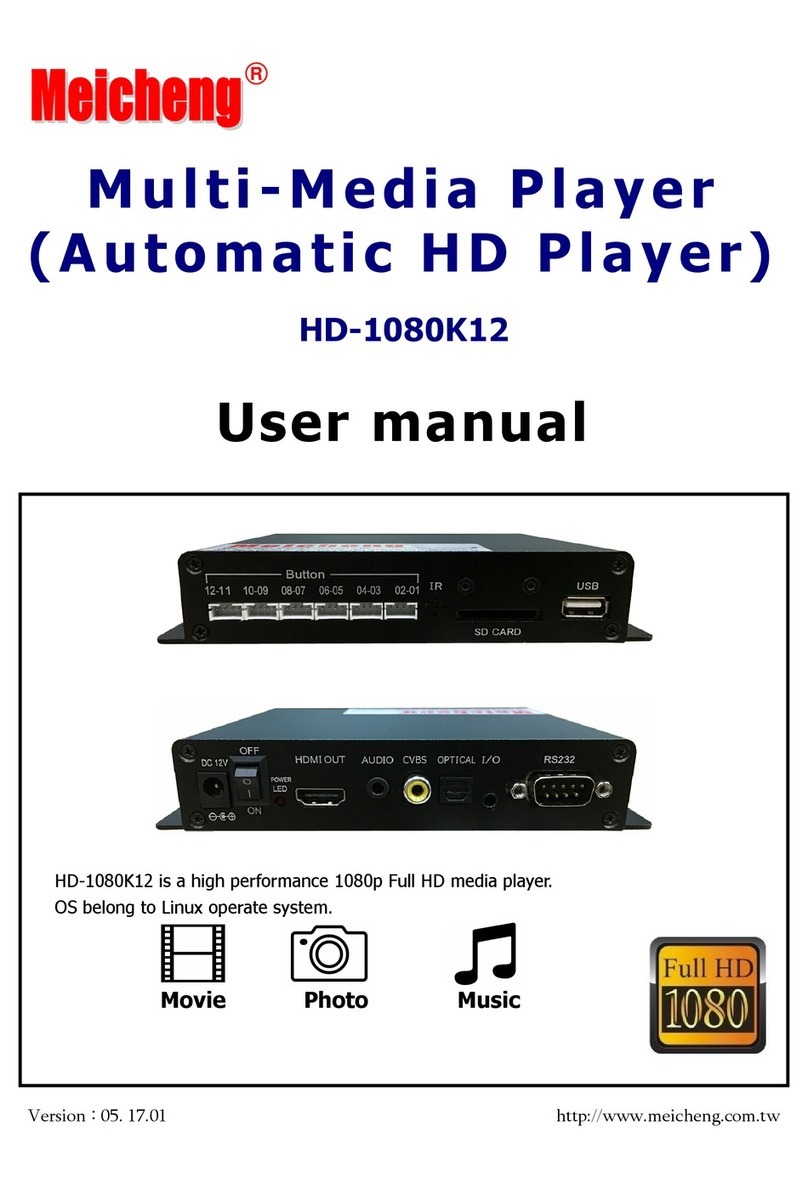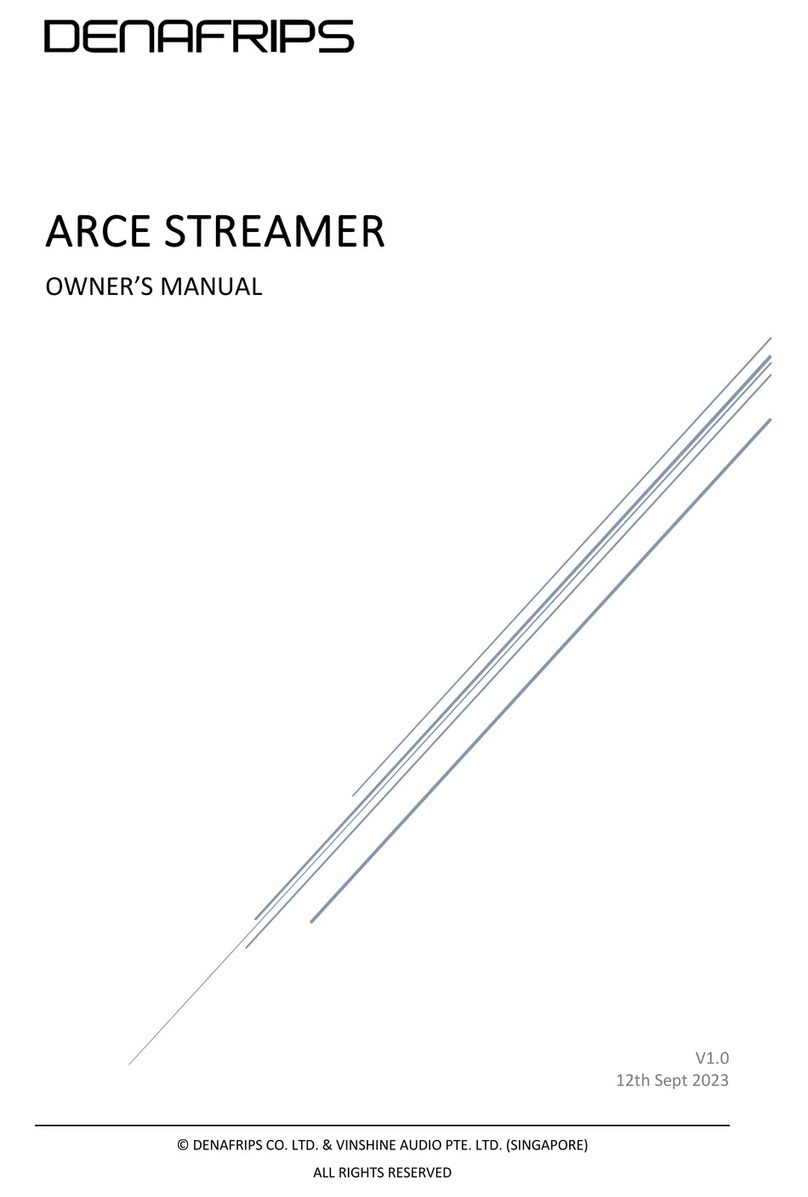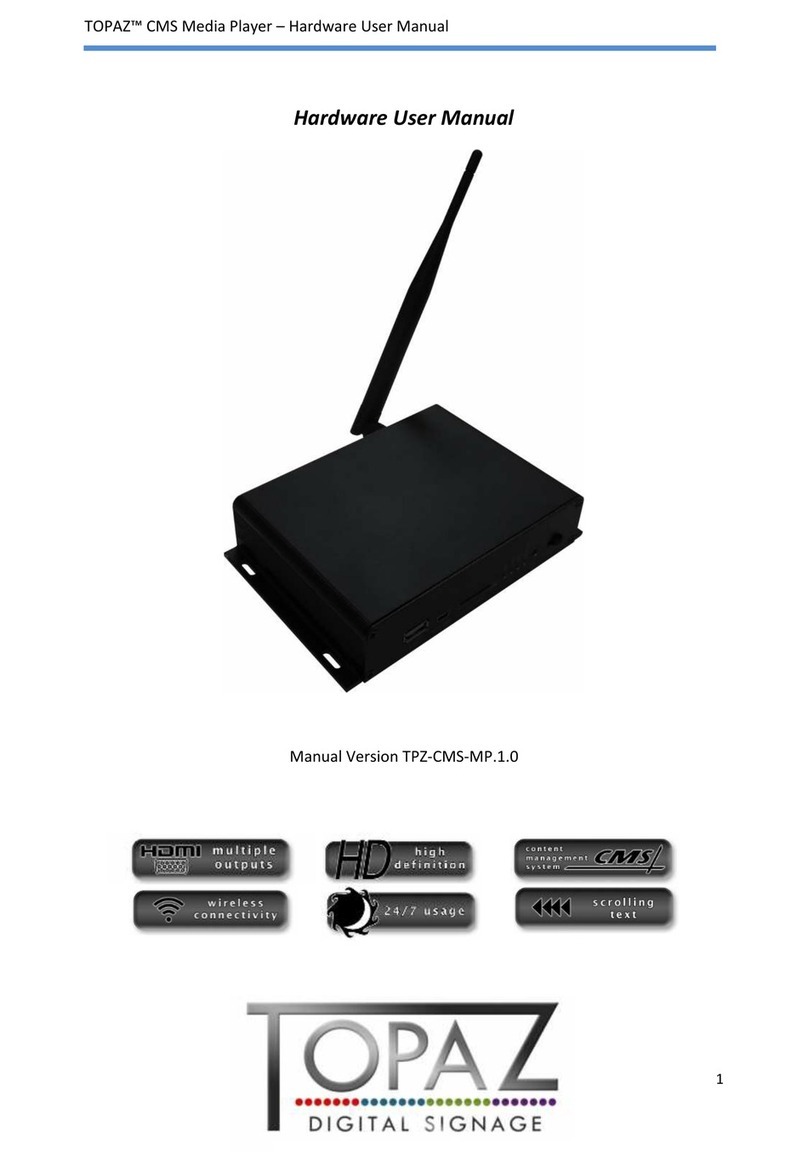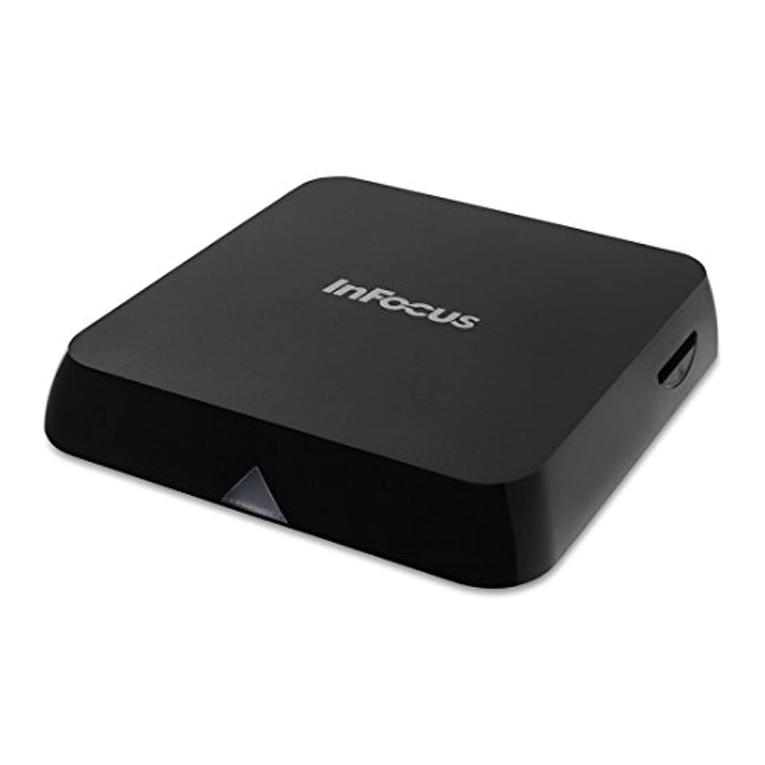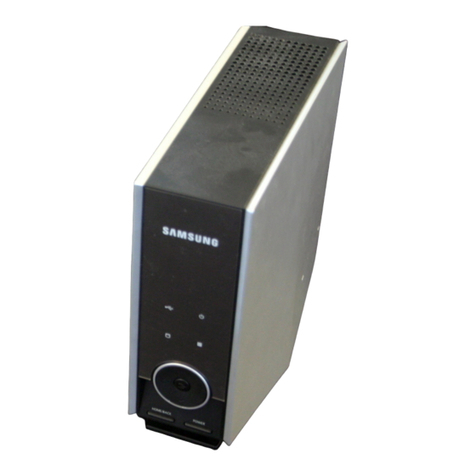Oversampling
Unlike many procedures used previously, Marantz deploys no rational
numbers for the upsampling of the sampling rate, e.g. 44.1 kHz from
a CD to 96kHz (factor 2.1768 ...), as this is often results in a deteriora-
tion of the “flow” and the “rhythm” of the playback. In its frequency
multiplier Marantz uses exclusively integer factors, and converts the
data with a FIR filter (finite impulse response filter) at either to 352.8
or 384 kilohertz. At the same time, this increases the quantisation
depth up to 48 bits; depending on the corresponding resolution of
the input signal (16 to 24 bits) results in a 2 to 8-fold oversampling.
Noise Shaping
The noise shaping quantifies a mathematical return of rounding
errors back to the beginning of the processing of the audio data.
The effect of this feedback is similar to the “transfer” in manual,
column-by-column addition to or subtraction from two numbers on
the paper. This feedback from the rounding error of the quantiser
is offset against the next digital word (1 sample with up to 48 bits),
added up along with the next random value of the dither and in turn
sent to the quantiser. Over time each rounding error of the voltage
axis (bits) shifts to a correct value on the time axis (sampling
frequency) in this way. The result corresponds more accurately with
the original audio signal with the higher resolution and therefore
sounds better than simply rounding or truncation the signal. The
random element of the dithering signal also prevents the occur-
rence of noise by the feedback of the transfer to the input, as
could occur with the previously mentioned noise shaper procedure
without dithering.
The noise shaper filter only acts with the LSB (the least significant
bit, the “smallest” bit) and returns it to the input of the quantizer
Dithering
Dithering is, put very simply, the signal mixed with noise. In the
reduction from high to low resolution, artifacts which can be
perceived as a distortion occur, as the patterns now appear that do
not belong to an actual music signal.
This can be illustrated through graphic sequencing. The colour
gradient of the diagram, originally 24-bit, was reduced to 4 bits to
illustrate the effect. The problem is transferable between graphics
and audio.
Here is a diagram quantised with 24-bit
colour depth. In this analogy it corre-
sponds with an original, high-resolution
audio signal. It consists of a similar
representation of an analogue image,
with smooth, seamless colours.
If the graphics to illustrate a lower colour
depth are added below, anomalies that
do not match the original (24-bit) appear.
Even artifacts, new image details will be-
come visible in the form of ring patterns
that do not belong to the original image.
The same occurs in the downsampling
of audio signals. When flattening higher
resolutions, interference (distortion)
is created that does not belong to the
original.
If the reduced image is allocated to a
suitable noise, artifacts occurring as a
result of the reduction of the original
low-resolution image disappear almost
completely. With the displaced dither, the
image has a significantly greater resem-
blance to the the original high resolution,
despite the lower depth in colour.
Something similar takes place In the
audio processing. With the right dither
displacement, the rounding error is dis-
tributed in a statistically favourable man-
ner, the sound is closer to the original.
www.marantz.eu
White paper
Marantz Musical Mastering | NA-11S1 | V1.0, Status Feb. 2013 | 2

